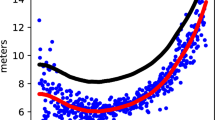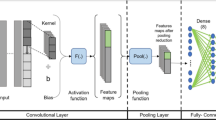Abstract
The rapid enhancement of high-energy electron flux affects the safe operation of satellites in the synchronous orbit area, so accurate forecast of flux is a key focus in space weather research. This study uses >2 MeV electron flux, solar wind parameters, and geomagnetic parameters from 2001 to 2006 to perform a delayed analysis of input parameters and establish a prediction model named gaussian process regression (GPR) based on machine learning, where sets of 2001-2005 are used as training and sets from January to December in 2006 as testing. It is shown that the GPR is found to have a better performance when comparing with four typical and widely used models: RDF, Low-E, FLUXPRED, and REFM. It also outperforms other intelligence models like backward propagation neural network (BPNN), support vector machine regression (SVR), decision tree regression (DT), and long short-term memory network (LSTM) in terms of flux forecast. The prediction efficiency (PE), correlation coefficient (R), and root mean square error (RMSE) of our GPR model are 0.83, 0.91, and 0.39, respectively. The validation of GPR is further verified by its relatively better prediction of extreme disturbed events in which electron flux suddenly increased or decreased by several orders of magnitude.





Similar content being viewed by others
Data Availability
>2 MeV high-energy electron flux is from GOES satellite and can be downloaded from the website of NOAA (https://ngdc.noaa.gov). The geomagnetic data comes from the Japan Memanbetsu station of the World Geomagnetic Data Center (http://wdc.kugi.kyoto-u.ac.jp/). The solar wind data is the data observed by the ACE spacecraft at the interplanetary L1 point (http://cdaweb.gsfc.nasa.gov/cdaweb/).
References
Baker, D.N., Mcpherron, R.L., Cayton, T.E., et al.: Linear prediction filter analysis of relativistic electron properties at 6.6 re. J. Geophys. Res. Space Phys. 95(A9), 15133–15140 (1990)
Claveria, O., Monte, E., Torra, S.: Regional tourism demand forecasting with machine learning models: Gaussian process regression vs. neural network models in a multiple-input multiple-output setting. SSRN Electr. J. (2017)
Futaka, M., Taguchi, S., Okuzawa, T., et al.: Neural network prediction of relativistic electrons at geosynchronous orbit during the storm recovery phase: effects of recurring substorms. Ann. Geophys. 20, 947–951 (2002)
Iluore, K., Lu, J.Y.: Long short-term memory and gated recurrent neural networks to predict the ionospheric vertical total electron content. Adv. Space Res. 70(3), 652–665 (2022)
Kitamura, K., Nakamura, Y., Tokumitsu, M., et al.: Prediction of the electron flux environment in geosynchronous orbit using a neural network technique. Artif. Life Robot. 16(3), 389–392 (2011)
Lam, H.L.: On the predictive potential of pc5 ulf waves to forecast relativistic electrons based on their relationships over two solar cycles. Space Weather 15(1), 163–179 (2017)
Li, X.L., Temerin, M., Baker, D.N., et al.: Quantitative prediction of radiation belt electrons at geostationary orbit based on solar wind measurements. Geophys. Res. Lett. 28(9), 1887–1890 (2001)
Ling, A.G., Ginet, G.P., Hilmer, R.V., et al.: A neural network-based geosynchronous relativistic electron flux forecasting model. Space Weather 8(9), S09003 (2010)
Liu, J., Chen, Z.Q.: Remaining useful life prediction of lithium-ion batteries based on health indicator and gaussian process regression model. IEEE Access 7, 39474–39484 (2019)
Lueder, J., Manzhos, S.: Non-parametric local pseudopotentials with machine learning: a tin pseudopotential built using gaussian process regression. J. Phys. Chem. A 124(52), 11111–11124 (2020)
Ni, W.D., Wang, K., Chen, T., et al.: Gpr model with signal preprocessing and bias update for dynamic processes modeling. Control Eng. Pract. 20(12), 1281–1292 (2012)
Paulikas, G.A., Blake, J.B.: Effects of solar the wind on magnetospheric dynamics: energetic electrons at the synchronous orbit. Trans. Am. Geophys. Union 21, 180–202 (1979)
Potapov, A., Ryzhakova, L., Tsegmed, B., et al.: A new approach to predict and estimate enhancements of killer electron flux at geosynchronous. Acta Astronaut. 126, 47–51 (2016)
Qian, Y.D., Yang, J.W., Zhang, H., et al.: An hourly prediction model of relativistic electrons based on empirical mode decomposition. Space Weather 18(8) (2020)
Regi, M., Lauretis, M.D., Francia, P.: Pc5 geomagnetic fluctuations in response to solar wind excitation and their relationship with relativistic electron fluxes in the outer radiation belt. Earth Planets Space 67(1), 9 (2015)
Rigler, E.J., Wiltberger, M., Baker, D.N.: Radiation belt electrons respond to multiple solar wind inputs. J. Geophys. Res. Space Phys. 112(A6), A06208 (2007)
Rostoker, G., Skone, S., Baker, D.N.: On the origin of relativistic electrons in the magnetosphere associated with some geomagnetic storms. Geophys. Res. Lett. 25(19), 3701–3704 (1998)
Simms, L., Engebretson, M., Clilverd, M., et al.: A distributed lag autoregressive model of geostationary relativistic electron fluxes: Comparing the influences of waves, seed and source electrons, and solar wind inputs. J. Geophys. Res. Space Phys. (2018)
Stringer, G.A., Heuten, I., Salazar, C., et al.: Artificial neural network (ann) forecasting of energetic electrons at geosynchronous orbit. Geophys. Monogr. Ser., 291–295 (1996)
Turner, D.L., Li, X.L.: Quantitative forecast of relativistic electron flux at geosynchronous orbit based on low-energy electron flux. Space Weather. (2008)
Wagberg, J., Zachariah, D., Schon, T., et al.: Prediction performance after learning in gaussian process regression. In: Proceedings of the 20th International Conference on Artificial Intelligence and Statistics, vol. 54, pp. 1264–1272 (2017)
Wei, L.H., Zhong, Q.Z., Lin, R., et al.: Quantitative prediction of high-energy electron integral flux at geostationary orbit based on deep learning. Space Weather 16, 903–916 (2018)
Zhong, Q.Z., Wei, L.H., Lin, R.L., et al.: Statistical model of relativistic electron fluence forecast at geostationary orbit. Chin. J. Space Sci. 39(1), 18–27 (2019)
Funding
This work was supported by the National Key R&D Program of China (2021YFA0718600), and the National Natural Science Foundation of China (Grant Nos. 42030203, 41931073, 41974190, and 42130202).
Author information
Authors and Affiliations
Contributions
Conceptualization and methodology, J. Y. Lu, H. Zhang, and G. S. Peng; Formal analysis and investigation, G. S. Peng and H. Zhang; Writing-original draft preparation, G. S. Peng and H. Zhang; Writing-review and editing, G. S. Peng, J. Y. Lu, H. Zhang, X. X. Zhang, G. L. Yang, Z. Q. Wang, C. Shen, M. Yi, and Y. H. Hao; All authors have read and agreed to the published version of the manuscript.
Corresponding authors
Ethics declarations
Competing interests
The authors declare no competing interests.
Additional information
Publisher’s Note
Springer Nature remains neutral with regard to jurisdictional claims in published maps and institutional affiliations.
Rights and permissions
Springer Nature or its licensor holds exclusive rights to this article under a publishing agreement with the author(s) or other rightsholder(s); author self-archiving of the accepted manuscript version of this article is solely governed by the terms of such publishing agreement and applicable law.
About this article
Cite this article
Peng, G., Lu, J., Zhang, H. et al. Short-term forecast of high-energy electron flux based on GPR. Astrophys Space Sci 367, 89 (2022). https://doi.org/10.1007/s10509-022-04123-9
Received:
Accepted:
Published:
DOI: https://doi.org/10.1007/s10509-022-04123-9




